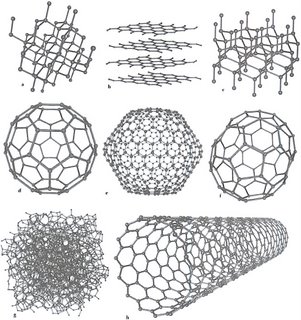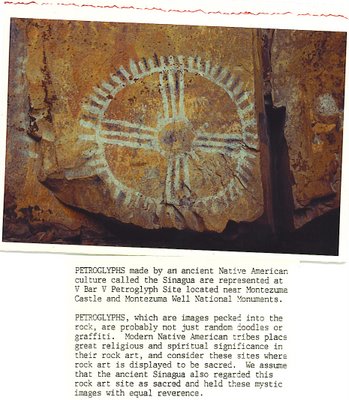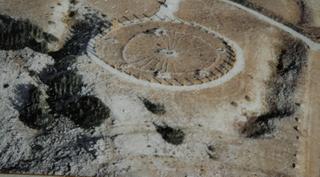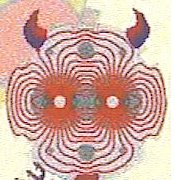At this point in the development, although geometry provided a common framework for all the forces, there was still no way to complete the unification by combining quantum theory and general relativity. Since quantum theory deals with the very small and general relativity with the very large, many physicists feel that, for all practical purposes, there is no need to attempt such an ultimate unification. Others however disagree, arguing that physicists should never give up on this ultimate search, and for these the hunt for this final unification is the ‘holy grail’. Michael Atiyah
"No Royal Road to Geometry?"
Are you an observant person? Look at the above picture. Why ask such a question as to, "No Royal Road to Geometry?" This presupposes that a logic is formulated that leads not only one by the "phenomenological values" but by the very principal of logic itself.
All those who have written histories bring to this point their account of the development of this science. Not long after these men came Euclid, who brought together the Elements, systematizing many of the theorems of Eudoxus, perfecting many of those of Theatetus, and putting in irrefutable demonstrable form propositions that had been rather loosely established by his predecessors. He lived in the time of Ptolemy the First, for Archimedes, who lived after the time of the first Ptolemy, mentions Euclid. It is also reported that Ptolemy once asked Euclid if there was not a shorter road to geometry that through the Elements, and Euclid replied that there was no royal road to geometry. He was therefore later than Plato's group but earlier than Eratosthenes and Archimedes, for these two men were contemporaries, as Eratosthenes somewhere says. Euclid belonged to the persuasion of Plato and was at home in this philosophy; and this is why he thought the goal of the Elements as a whole to be the construction of the so-called Platonic figures. (Proclus, ed. Friedlein, p. 68, tr. Morrow)
I don't think I could of made it any easier for one, but to reveal the answer in the quote. Now you must remember how the logic is introduced here, and what came before Euclid. The postulates are self evident in his analysis but, little did he know that there would be a "Royal Road indeed" to geometry that was much more complex and beautiful then the dry implication logic would reveal of itself.
It's done for a reason and all the geometries had to be leading in this progressive view to demonstrate that a "projective geometry" is the final destination, although, still evolving?
Eventually it was discovered that the parallel postulate is logically independent of the other postulates, and you get a perfectly consistent system even if you assume that parallel postulate is false. This means that it is possible to assign meanings to the terms "point" and "line" in such a way that they satisfy the first four postulates but not the parallel postulate. These are called non-Euclidean geometries. Projective geometry is not really a typical non-Euclidean geometry, but it can still be treated as such.
In this axiomatic approach, projective geometry means any collection of things called "points" and things called "lines" that obey the same first four basic properties that points and lines in a familiar flat plane do, but which, instead of the parallel postulate, satisfy the following opposite property instead:
The projective axiom: Any two lines intersect (in exactly one point).
If you are "ever the artist" it is good to know in which direction you will use the sun, in order to demonstrate the shadowing that will go on into your picture. While you might of thought there was everything to know about Plato's cave and it's implication I am telling you indeed that the logic is a formative apparatus concealed in the geometries that are used to explain such questions about, "the shape of space."
The Material World
 There are two reasons that having mapped E8 is so important. The practical one is that E8 has major applications: mathematical analysis of the most recent versions of string theory and supergravity theories all keep revealing structure based on E8. E8 seems to be part of the structure of our universe.
There are two reasons that having mapped E8 is so important. The practical one is that E8 has major applications: mathematical analysis of the most recent versions of string theory and supergravity theories all keep revealing structure based on E8. E8 seems to be part of the structure of our universe.The other reason is just that the complete mapping of E8 is the largest mathematical structure ever mapped out in full detail by human beings. It takes 60 gigabytes to store the map of E8. If you were to write it out on paper in 6-point print (that's really small print), you'd need a piece of paper bigger than the island of Manhattan. This thing is huge.
Polytopes and allotrope are examples to me of "shapes in their formative compulsions" that while very very small in their continuing expression, "below planck length" in our analysis of the world, has an "formative structure" in the case of the allotrope in the material world. The polytopes, as an abstract structure of math thinking about the world. As if in nature's other ways.

This illustration depicts eight of the allotropes (different molecular configurations) that pure carbon can take:
a) Diamond
b) Graphite
c) Lonsdaleite
d) Buckminsterfullerene (C60)
e) C540
f) C70
g) Amorphous carbon
h) single-walled carbon nanotube
Review of experiments
Graphite exhibits elastic behaviour and even improves its mechanical strength up to the temperature of about 2500 K. Measured changes in ultrasonic velocity in graphite after high temperature creep shows marked plasticity at temperatures above 2200 K [16]. From the standpoint of thermodynamics, melting is a phase transition of the first kind, with an abrupt enthalpy change constituting the heat of melting. Therefore, any experimental proof of melting is associated with direct recording of the temperature dependence of enthalpy in the neighbourhood of a melting point. Pulsed heating of carbon materials was studied experimentally by transient electrical resistance and arc discharge techniques, in millisecond and microsecond time regime (see, e.g., [17, 18]), and by pulsed laser heating, in microsecond, nanosecond and picosecond time regime (see, e.g., [11, 19, 20]). Both kind of experiments recorded significant changes in the material properties (density, electrical and thermal conductivity, reflectivity, etc. ) within the range 4000-5000 K, interpreted as a phase change to a liquid state. The results of graphite irradiation by lasers suggest [11] that there is at least a small range of temperatures for which liquid carbon can exist at pressure as low as 0.01 GPa. The phase boundaries between graphite and liquid were investigated experimentally and defined fairly well.

Sean Carroll:But if you peer closely, you will see that the bottom one is the lopsided one — the overall contrast (representing temperature fluctuations) is a bit higher on the left than on the right, while in the untilted image at the top they are (statistically) equal. (The lower image exaggerates the claimed effect in the real universe by a factor of two, just to make it easier to see by eye.)See The Lopsided Universe-.
#36.Plato on Jun 12th, 2008 at 10:17 am
Lawrence,
Thanks again.
“I’m a Platonist — a follower of Plato — who believes that one didn’t invent these sorts of things, that one discovers them. In a sense, all these mathematical facts are right there waiting to be discovered.”Harold Scott Macdonald (H. S. M.) Coxeter
Moving to polytopes or allotrope seem to have values in science? Buckminister Fuller and Richard Smalley in terms of allotrope.
I was looking at Sylvestor surfaces and the Clebsch diagram. Cayley too. These configurations to me were about “surfaces,” and if we were to allot a progression to the “projective geometries” here in relation to higher dimensional thinking, “as the polytope[E8]“(where Coxeter[I meant to apologize for misspelling earlier] drew us to abstraction to the see “higher dimensional relations” toward Plato’s light.)
As the furthest extent of the Conjecture , how shall we place the dynamics of Sylvestor surfaces and B Fields in relation to the timeline of these geometries? Historically this would seem in order, but under the advancement of thinking in theoretics does it serve a purpose? Going beyond “planck length” what is a person to do?
Thanks for the clarifications on Lagrange points. This is how I see the WMAP.
Diagram of the Lagrange Point gravitational forces associated with the Sun-Earth system. WMAP orbits around L2, which is about 1.5 million km from the Earth. Lagrange Points are positions in space where the gravitational forces of a two body system like the Sun and the Earth produce enhanced regions of attraction and repulsion. The forces at L2 tend to keep WMAP aligned on the Sun-Earth axis, but requires course correction to keep the spacecraft from moving toward or away from the Earth.
Such concentration in the view of Sean’s group of the total WMAP while finding such a concentration would be revealing would it not of this geometrical instance in relation to gravitational gathering or views of the bulk tendency? Another example to show this fascinating elevation to non-euclidean, gravitational lensing, could be seen in this same light.
Such mapping would be important to the context of “seeing in the whole universe.”
See:No Royal Road to Geometry
Allotropes and the Ray of Creation
Pasquale Del Pezzo and E8 Origination?
Projective Geometries


















